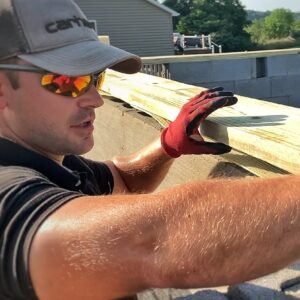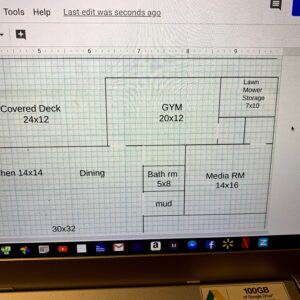Table of Contents
ToggleIntroduction
Building your own home can be an extremely rewarding experience, both mentally and financially. You’ll have total control over the design and construction of your home, and you’ll be able to customize it to your exact needs and preferences. You’ll also save money in the long run, as you won’t have to pay a contractor to build it for you.
1. The benefits of building your own home
Building your own home can have a number of benefits, both financial and personal. Here are some of the key benefits:
– You’ll have total control over the design and construction of your home, which means you can customize it to your exact needs and preferences.
– You’ll save money in the long run, as you won’t have to pay a contractor to build it for you.
– The process of building your own home can be extremely rewarding, as you’ll be able to take pride in knowing that you built it yourself.

2. The cost and time involved in building a home
The cost and time involved in building a home can vary considerably, depending on the size and complexity of the project. However, in general, the cost of building a home can be significantly lower than the cost of buying a pre-existing home. The time required to build a home can also vary greatly, depending on the level of complexity involved. However, in general, it will take significantly longer to build a home than it would to buy a pre-existing home.
3. What you should know before starting
There are a few key things you should know before starting the process of building your own home:
– It’s important to have a clear idea of what you want in your home, and to make sure that your plans are feasible and realistic.
– It’s essential to have a strong working knowledge of construction and engineering principles.
– It’s also important to be organized and to have a good understanding of the construction process.

4. Considerations for the design of your new home
When designing your new home, there are a few key things to keep in mind:
– The climate and environment in which the home will be built. For example, if you live in an area that is prone to hurricanes, you’ll need to make sure that your home is built to withstand high winds.
– The size and layout of the home. You’ll need to consider how many bedrooms and bathrooms you need, as well as the overall square footage of the home.
– The style of the home. Do you want a traditional home, or something more modern?

5. Tips for avoiding mistakes when building your own house
Building your own home can be a very rewarding experience, but it’s important to avoid making mistakes along the way. Here are some tips for avoiding mistakes when building your own house:
– Make sure that you have a clear idea of what you want in your home, and make sure that your plans are feasible and realistic.
– Have a good understanding of the building process and be organized.
– Hire a reputable contractor if you have doubts. One who has experience building homes.
– Get everything in writing, including contracts, plans, and estimates.
6. Why it’s worth it to build your own house
Whether you’re a first-time homeowner or an old pro, your opportunity to build a new house from the ground up is something that many people dream about. Whether it’s for leisure or business, there are numerous reasons why building your own home might be appealing.
Building a home can give you a sense of accomplishment that comes with adding your personal touch to the place you’ll live.
7. The best part of building your own home.
The best part of building your own home is the sense of accomplishment you feel when you finish it. Not only have you created a place to call your own, but you’ve also learned a great deal about construction and engineering in the process. This can be an extremely rewarding experience!
8. How to get started on building your own home
If you’re interested in building your own home, the best way to get started is to gather as much information as possible. There are a number of resources available online and in libraries, and it’s important to read as much as you can before starting the process. I have many videos I made on The Excellent Laborer YouTube channel that you will find helpful. You’ll also need to consult with a contractor or engineer to get a better understanding of your house plans if you are new to construction.

9. Building your own home: The process
Building a house is a huge project, and it can be difficult to know where to start. Here is a general overview of the process of building a house:
1. Planning: This is the first step in building a house, and it’s important to have a clear idea of what you want in your home. You’ll need to consider the size, layout, and style of the home, as well as the climate and environment in which it will be built.
2. Design: Once you have a clear idea of what you want in your home, you can begin to design it. You’ll need to consult with a contractor or engineer to get a better understanding of your house plans if you are new to construction.
3. Construction: This is the actual process of building your house. You’ll need to hire a contractor and workers, and purchase materials to get started.
4. Finishing touches: Once the construction of your house is complete, you can add the finishing touches, such as paint, flooring, etc.
10. Things to keep in mind after the build is complete
Once the build of your house is complete, there are a few things you’ll need to keep in mind. Here are a few tips:
– Make sure that you have a good insurance policy, as your home will be worth more now that it’s finished.
– Keep track of any repairs or maintenance that needs to be done, and address any issues as soon as possible.
– Enjoy your new home! You’ve worked hard to build it, so make sure to enjoy it.
Conclusion
Building a house is definitely not for everyone. It’s a huge project that can be difficult to know where to start, and it requires a lot of time, effort, and money. If you’re not prepared for the challenges involved in building your own home, it might be best to hire a contractor instead. There are many benefits to building your own home, but it’s important to understand the challenges involved before you get started. Thanks for reading.


Pingback: How To Install A Sill Plate On A Foundation - Excellent Laborer
Pingback: How To Install Electrical Service Conduit - Excellent Laborer